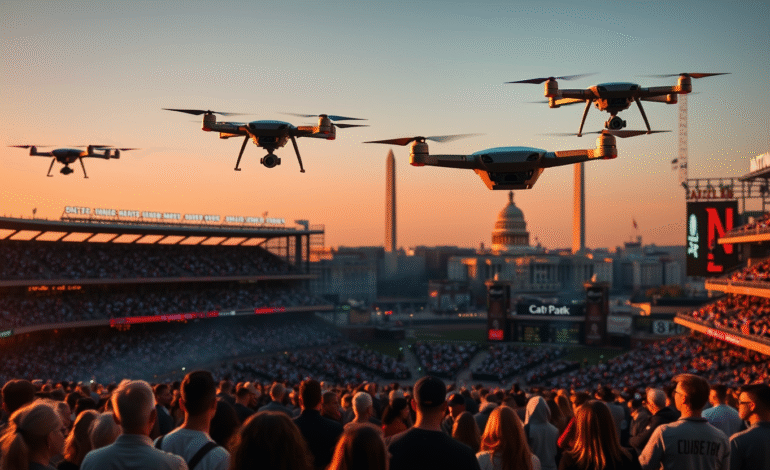Drones Soar Towards New Heights as Anticipation Grows for Pending Federal Regulation in the Industry

In recent developments, commercial drone demonstrations occurred at Nationals Park in Washington D.C., marking a significant advancement in the realm of unmanned aviation. This event took place during a two-day policy conference organized by AUVSI (Association for Unmanned Vehicle Systems International), following rigorous approval processes from various regulatory bodies, including the Federal Aviation Administration (FAA), TSA, and DHS.
The demonstrations showcased a winged drone from Alphabet’s subsidiary, Wing, which took off from a center-field patio, hovered, lowered a cable for attaching a package, and flew across the outfield before releasing the package at a designated spot. Notably, the package contained baseballs, a delivery feat that could potentially address the Nationals’ ongoing struggle with accurate ball deliveries this season.
Current FAA regulations, under Part 107, require waivers for night operations, flights over humans, and beyond visual line of sight (BVLOS). However, a new set of regulations, Part 108, is being drafted to eliminate the need for these waivers. AUVSI CEO Michael Robbins highlighted that this change would simplify the process, currently described as “time-intensive and costly,” with an environmental assessment alone costing upwards of $100,000.
Government officials, including Daniel Edwards, acting assistant secretary for aviation and international affairs at the Department of Transportation, spoke at the conference about Part 108’s forthcoming release, although specific details remained elusive. The anticipated changes are expected to significantly scale the drone industry.
The discussions also touched upon challenges related to air traffic control systems, particularly in densely populated areas like New York, where a shortage of air traffic controllers leads to flight delays and cancellations. Shivanjli Sharma, manager of NASA’s Air Traffic Management Exploration Project, emphasized the need for system modernization to accommodate increasing drone traffic and other forms of advanced air mobility.
Robbins assured that delivery drones operating below 400 feet are not currently utilizing the existing air traffic control system. He also expressed confidence in the Trump administration’s plan to modernize this system, backed by $12.5 billion for the FAA in the budget-reconciliation bill.
Illegal drone activities near airports and the use of Chinese-made drones were other topics of concern discussed at the conference. Strategies to manage rogue drones and potential legislative actions regarding Chinese-made drones were highlighted by speakers, including Senator Rick Scott (R-FL) and AUVSI CEO Michael Robbins.
The overall sentiment among industry leaders was one of acknowledging public anxiety regarding drone safety and emphasizing the need for responsible development and regulations to ensure minimal impact on people and properties.






